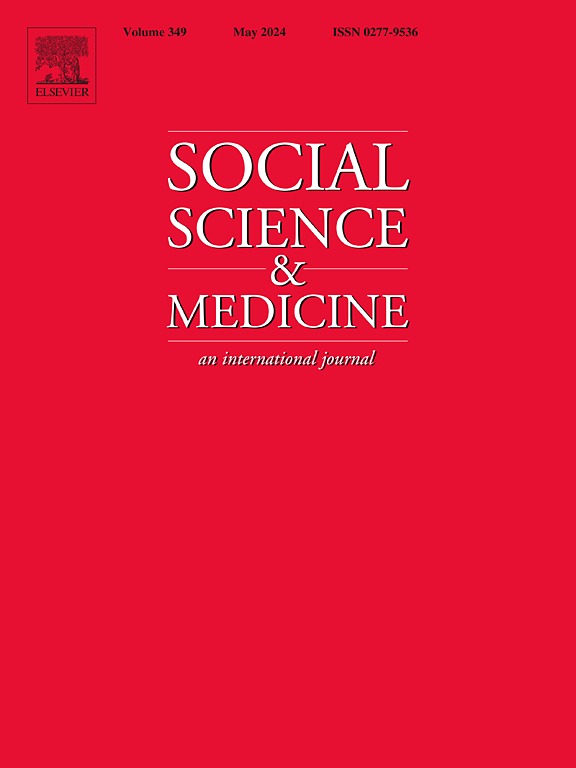在原地变老或停留在原地:一项关于挪威六个城市老年人独立性的重要定性研究
IF 4.9
2区 医学
Q1 PUBLIC, ENVIRONMENTAL & OCCUPATIONAL HEALTH
引用次数: 0
摘要
就地老龄化(AIP)的概念已经获得了大量的国际关注,特别是随着全球老龄化人口的增加。尽管有广泛的研究和政策支持,执行AIP政策的实际复杂性,特别是在不同的生活情况、地点、社会背景和不断发展的家庭结构中,仍然不清楚。本研究的目的是严格审查影响挪威六个不同城市的老年人、家庭照顾者和市政卫生和社会保健雇员的AIP经历的关键因素。本定性研究采用探索性解释设计,包括对市政雇员的焦点小组访谈(N = 36)和对老年人(N = 17)和家庭照顾者(N = 18)的半结构化个人访谈。这些城市在几个关键方面有所不同,包括人口规模、地理范围、中心地位、人口结构和经济。反思性专题分析确定了四个主题:1)与老龄化相关的准备:平衡个人和市政责任;2)获得适当服务:调整人与环境的契合度;3)家庭护理:弥合服务与实际需求之间的差距;4)过渡性住房:有尊严地支持老年人。总之,这些主题突出了促进老年人“独立素养”的必要性,确保他们在AIP期间获得独立生活和保持生活质量所需的知识、途径和支持。研究结果敦促重新评估形成安全和适当的人与环境匹配的当地因素,强调获得适当的服务、护理人员支持、住房选择、资源分配和增强熟练的医疗保健人员,以优化安全的AIP。研究结果可能对决策者、市政领导人和卫生服务人员制定适合当地情况的公平的AIP政策有参考意义。本文章由计算机程序翻译,如有差异,请以英文原文为准。
Ageing in place or stuck in place: A critical qualitative study on older adults’ independence across six municipalities in Norway
The concept of ageing in place (AIP) has garnered substantial international attention, especially with the global rise in the ageing population. Despite extensive research and policy support, the practical complexities of implementing AIP policy, particularly in diverse living situations, places, social contexts and evolving family structures, remain unclear. The purpose of this study was to critically examine the key factors influencing experiences of AIP among older individuals, family caregivers and municipal health and social care employees across six diverse Norwegian municipalities. This qualitative study utilised an explorative interpretative design, involving focus group interviews with municipal employees (N = 36) and semi-structured individual interviews with older persons (N = 17) and family caregivers (N = 18). The municipalities varied in several key dimensions, including population size, geographic extent, centrality, demographics and the economy. The reflexive thematic analysis identified four themes: i) Ageing-Related Preparation: Balancing Personal and Municipal Responsibility, ii) Access to Proper Services: Aligning the Person-Environment Fit, iii) Family Caregiving: Bridging the Gap between Services and Actual Needs, and iv) Transitional Housing: Supporting Aging in Place with Dignity. Together, these themes highlight the need to promote 'independence literacy' for older adults, ensuring they have the necessary knowledge, access, and support to live independently and maintain their quality of life while AIP. The findings urge a re-evaluation of local factors shaping safe and proper person–environment fit, emphasising access to proper services, caregiver support, housing options, resource allocation and the enhancement of skilled healthcare staff to optimise safe AIP. The findings may be relevant for policy makers, municipal leaders and health service employees in developing equitable AIP policies tailored to the local context.
求助全文
通过发布文献求助,成功后即可免费获取论文全文。
去求助
来源期刊

Social Science & Medicine
PUBLIC, ENVIRONMENTAL & OCCUPATIONAL HEALTH-
CiteScore
9.10
自引率
5.60%
发文量
762
审稿时长
38 days
期刊介绍:
Social Science & Medicine provides an international and interdisciplinary forum for the dissemination of social science research on health. We publish original research articles (both empirical and theoretical), reviews, position papers and commentaries on health issues, to inform current research, policy and practice in all areas of common interest to social scientists, health practitioners, and policy makers. The journal publishes material relevant to any aspect of health from a wide range of social science disciplines (anthropology, economics, epidemiology, geography, policy, psychology, and sociology), and material relevant to the social sciences from any of the professions concerned with physical and mental health, health care, clinical practice, and health policy and organization. We encourage material which is of general interest to an international readership.
 求助内容:
求助内容: 应助结果提醒方式:
应助结果提醒方式:


